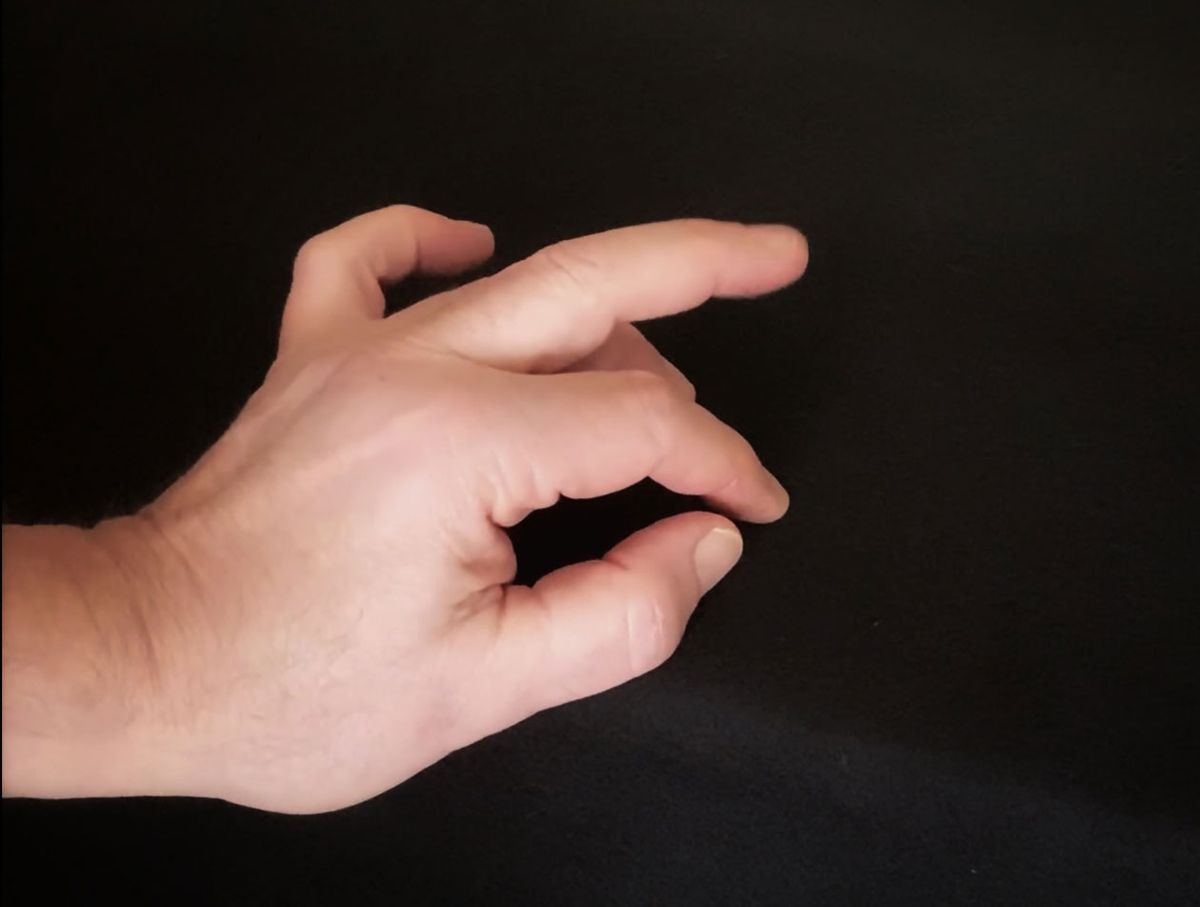You don’t need a fretboard to expand your fingerings.
This month’s lesson presents a series of hand and finger exercises that you can practice without an instrument. These have the potential to improve finger strength, coordination, and independence. They can also sharpen your rhythmic precision and your ability to play polyrhythms.
Many of these aren’t original ideas. If you’ve studied drums or piano, some of this may feel familiar. If not, these moves can be shockingly difficult. Don’t get discouraged, though. When you attempt mentally and physically challenging techniques—even unsuccessfully—you literally create new chemical connections in your brain. That’s essential in liberating yourself from repetitious muscle-memory playing.
Learning to Walk
These routines are fun but hard! Your hand “walks” across a flat surface using varying finger combinations, some quite challenging (Video 1).
Here are the moves from the video:
- Two-legged walk. Here you “walk” your fingers like an upright primate, using your middle and ring fingers as “legs” while your arms (index finger and pinky) hang beside your legs.
- Devil walk. Just make your basic heavy-metal horns and let your index finger and pinky be your legs.
- Crutch walk. Use your index finger and pinky as “crutches,” dragging your “legs” (middle and ring finger).
- Penguin walk. Start by making Mr. Spock’s salute, forming a gap between your middle and ring finger. Then waddle across your surface using your paired index and middle fingers as one leg and your paired ring finger and pinky as the other.
- Spider walk. Here you must move your index and ring fingers as one unit and your middle finger and pinky as another. Fun fact: Dave Mustaine of Megadeth claims credit for inventing this “spider fingering.” Fretted instrument players have used it since at least the 16th century.
- Bear walk. When bears walk, they move both right legs simultaneously, and then both left legs. Do the same here, with your thumb and index finger as one pair of legs and your ring finger and pinky as the other. Your middle finger represents the head.
- Dog walk. Unlike bears, dogs move their right front leg and left rear leg simultaneously while walking, and then their left front leg and right rear leg. Again, your middle finger is the head. This one is especially challenging, at least for me.
I used my left hand in these videos. Whichever hand you start with, continue with your other hand.
The Isolation Ward
If you’ve ever studied a keyboard instrument, the moves in Video 2 may seem easy. If not, brace for a challenge.
Place both hands on a flat surface, thumbs toward each other, and try these moves:
- Mirror image. Lift both thumbs while leaving all other fingers still. Then both index fingers, both middles, both rings, and both pinkies, always keeping any digits not in motion as still as possible. Then work backward from the pinky to the thumb.
- Left to right. Start with your hands flat. Lift your left-hand pinky and right-hand thumb in isolation, and then lift each successive pair of fingers working from left to right. Then return from right to left.
- Right to left. It’s the previous exercise in reverse. Start with your right-hand pinky and left-hand thumb, and then lift your fingers in pairs, working from right to left. Return to the starting point by moving from left to right.
Isolating individual fingers on both hands is difficult. Mentally flipping the orientation of your hands makes it even trickier.
Let’s Play Patty Cake
This final exercise is a cross between the previous one and the foot-and-hand tapping exercises from this lesson a few months back.
Video 3 features three fairly simple polyrhythms: 2 against 1, 3 against 1, 4 against 1, and 3 against 2. But accurately tapping the rhythms is only the first step. You must also exchange the rhythms between hands in tempo. The challenge is both physical and mental.
Next Moves
Once you find it comfortable to perform these exercises, make them uncomfortable again! For example, you might expand on the Video 1 exercises by walking your hands backward, or working both hands at the same time.
You can vary the finger isolation exercises in Video 2 via two-finger, three-finger, and four-finger combinations. And you can intensify the Video 3 exercises with more complex rhythmic combinations, such as 3 against 4 and 4 against 5.
In the Moment
I confess to some misgivings about these techniques. As an aspiring meditation practitioner, I increasingly value the ability to be focused and aware in the moment. Exercises like these can become twitchy, compulsive behavior that detaches you from your environment. Sometimes not thinking about guitar is one of the best things you can do for your playing.
One suggestion: Perhaps a few minutes of focused practice, followed by a session of free-form guitar playing? Chances are you’ll find yourself more strongly focused on your hand movements, more melodically adventurous, and a bit less likely to mindlessly finger your habitual patterns.


